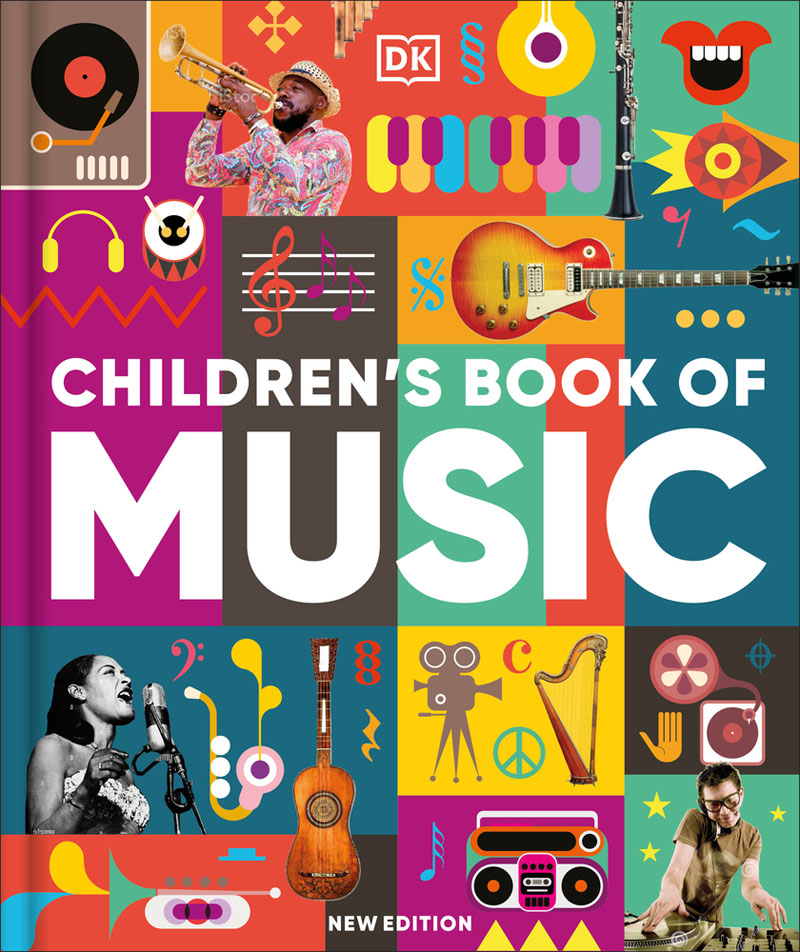"Children's Book
of Music"
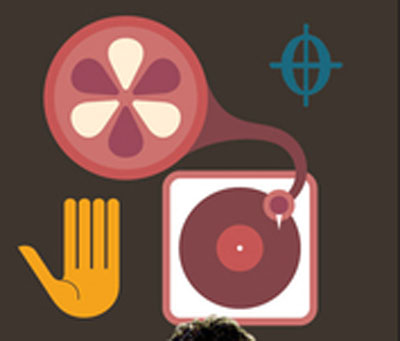
Glimpses of Recorded
Sound in Musical Performances
Doug Boilesen, June 2024
The "Children's Book of Music"
is a nicely illustrated book about "different musical styles,
the works and lives of famous composers and performers, how to play
instruments, and the amazing range of music around the world."
There are four different types of
pages in the book: Musican Profile; Instrument Profile;
Music Style; and Performance.
Within the "Modern music - PERFORMANCE"
section there are two pages on recorded sound which have phonograph
connections in addition to two phonograph related images on the
cover of the book.
 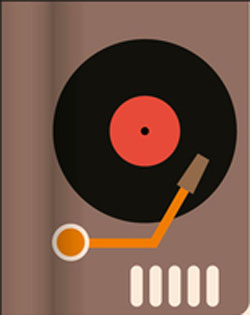
On page 100 there is
a small picture of an Edison tin foil phonograph (not Edison's first
tin foil phonograph) with the caption that on this phonograph "sound
is recorded as indentations on foil wrapped around a cylinder."
("Children's Book of Music," Second
American Edition published by DK Publishing, New York, 2023. ©
2010, 2023 Dorling Kindersley Limited DK, a Division of Penguin
Random House, LLC.)
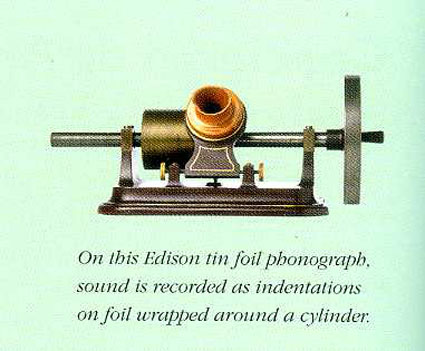
The Recorded
sound page provides a very high-level overview of recorded music's
timeline:
In 1877, Thomas Edison made the
first recording of a human voice on his newly invented cylinder
phonograph. This began a wonder of inventions in the recording
world, from gramophone records to today's fifth generation
(5G) technology. The birth of radio provided a springboard for
musicians and this continues today with the availability of digital
downloads and online streaming. (Ibid. p. 100)
Four artists were also highlighted
on page 100 with the following text and performance related factolas.
Nora Bayes, 1880-1928, American
A popular singer during World
War I, Nora Bayes performed morale-boosting songs for Allied
troops. Her song, Over There, written in 1917, became an international
hit and the anthem for America's war effort. Bayes recorded
on phonographic records.

"Over There,"
Words and Music by George M. Cohan, William Jerome Publishing, New
York, 1917 (Source: Lester S. Levy Sheet Music Collection, Johns
Hopkins).
John McCormack, 1884-1945, Irish
Tenor
John McCormack sang classical and popular songs. He made
his first recording in 1904 on a cylinder phonograph.
In the 1910s and 1920s, he recorded for a leading producer of
phonograph records, The Victor Talking Machine Company.
The well-researched website of The
John McCormack Society promotes the legacy of the great tenor
and includes the complete discography
of over 800 recordings made by John McCormack. That discography
is based on "the research of Paul Worth and Jim Cartright that
was published in their book "John McCormack – A Comprehensive
Discography (JMACD)," 1986 (Greenwood Press). Nine Edison cylinder
records were made in the fall of 1904 in London and these were the
earliest recordings made by McCormack.
The nine known published Edison
cylinders were two-minute black wax records in the gold-moulded
series. Presumably, there was only one take of each of these.
The first Edison cylinder has the following information on the
edge in raised letters: “(Title). J. McCormack. Thomas A. Edison.
Pat’d 13124.” (Ibid.)
The first Edison recording made by
McCormack was "The Snowy Breasted Pearl" (Traditional)
No. 13124 recorded "for the National Phonograph Company,
UK. With Orchestra conducted by possibly Hubert Bath. With spoken
announcements by John McCormack. Two-minute black wax cylinders;
one take of each. 160 rpm." (Ibid.)
Another of those nine 1904 Edison
cylinders was "The Green Isle of Erin" which can be heard
courtesy of the UCSB Cylinder Record Collection:
LISTEN to Edison Gold Moulded
Record "The
Green Isle of Erin" by John McCormack, 1904 (UCSB Cylinder
Record Collection) No. 13153 Foreign Gold Moulded Record: British
series.
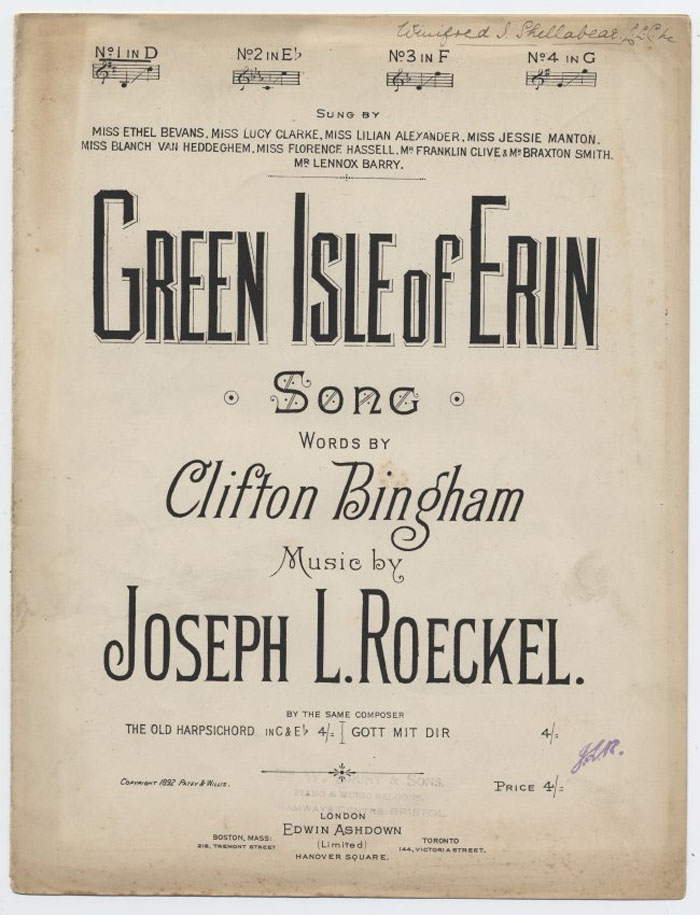
"Green Isle of Erin,"
Words by Clifton Bingham, Music by Joseph L. Roeckel, Published
by Edwin Ashdown, Ltd., London, 1892. (Source: Irish
Sheet Music Archives).
Bing Crosby, 1903-1977,
American
Bing Crosby, one of the most
successful recording artists of all time, made the bestselling
record ever, White Christmas. He is famous for his "crooner"
sound, developed by singing close to the new-style microphones
, introduced by Bell Labs in the US in 1926.
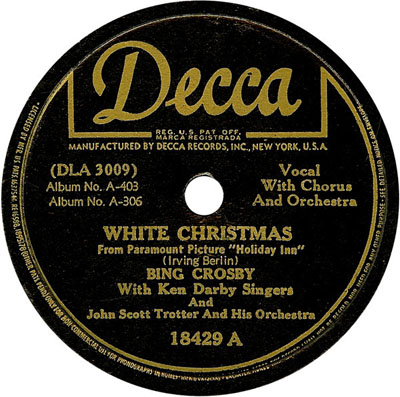
Recorded on May 29,
1942, 78 single release of "White Christmas" by Bing Crosby
on Decca Records, 18429 A, with Ken Darby Singers and John Scott
Trotter and His Orchestra, Matrix # DLA 3009, 10-in.
double-faced). (DAHR).
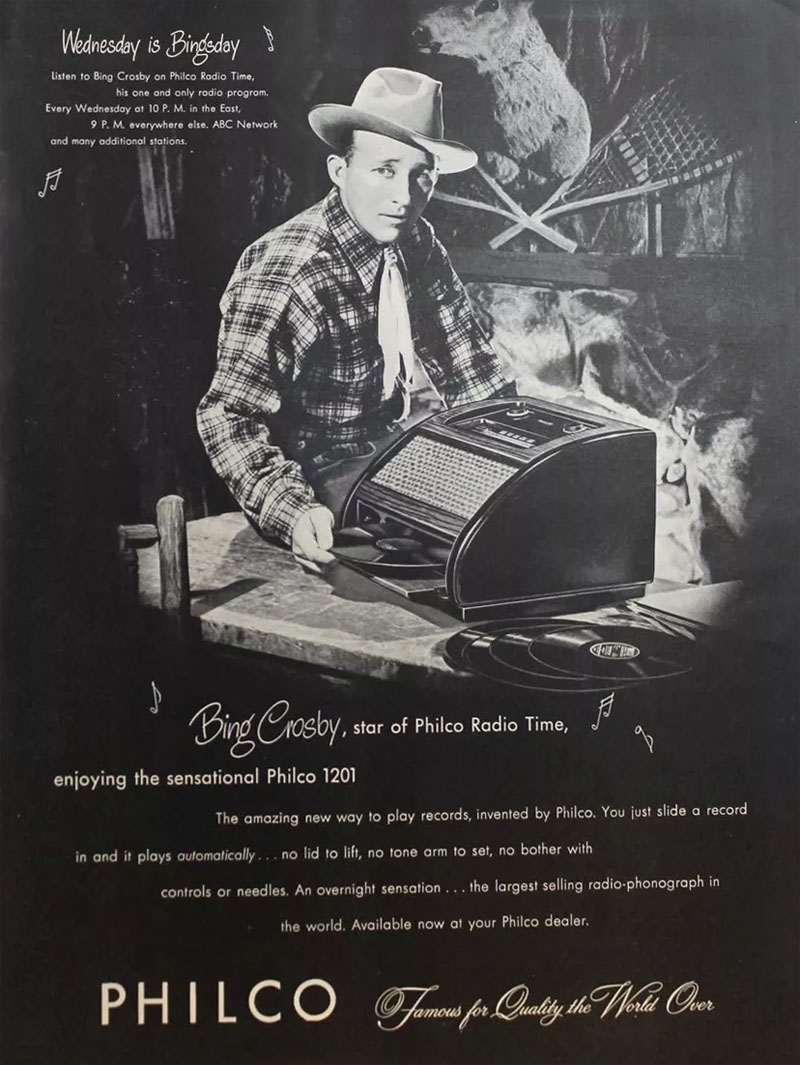
Bing Crosby enjoying the amazing
new way to play records, Philco magazine ad, 1947

Bing Crosby for Philco Portable Phonographs,
1947
Benny Goodman, 1909-1986,
American
Clarinet player Benny Goodman
and his band played a style of jazz that made people dance.
Goodman began recording in the 1920s, and then, with his band,
went on to take a regular slot in the nationwide radio program,
"Let's Dance."
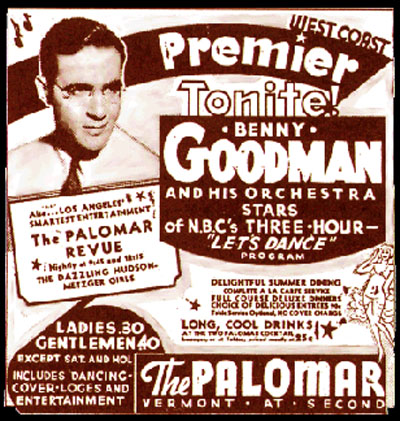
1935 Promotion Benny
Goodman and His Orchestra as stars of N.B.C's radio program
"Let's Dance." (Wikipedia)
Benny Goodman for
Columbia Records, 1947
Five additional artists
were highlighted on page 101:
Smokey Robinson,
1940 - American
Patsy Cline, 1932-1963,
American
Jimi Hendrix,
1942-1970, American
Adele, 1988-,
British
BTS, 2013-, South
Korean
Second American Edition
published by DK Publishing, New York, 2023. © 2010, 2023 Dorling
Kindersley Limited DK, a Division of Penguin Random House, LLC.
Phonographia
|

